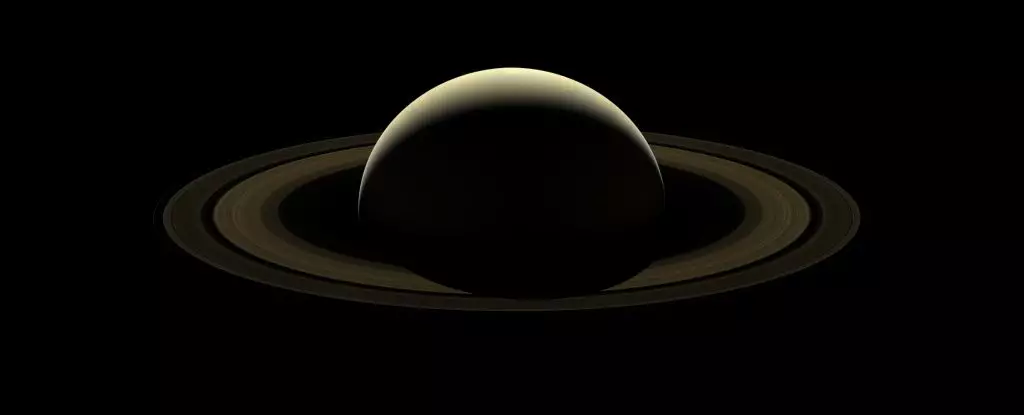Saturn, with its beautiful rings, has always been a source of fascination for scientists. Recently, researchers have made a groundbreaking discovery – Saturn exhibits a massive, seasonal energy imbalance across its entire globe. This revelation has far-reaching implications for our understanding of weather patterns, climate dynamics on gas giant planets, as well as their long-term evolution. Physicist Liming Li from the University of Houston describes this finding as a significant turning point in planetary and atmospheric science.
The Sun, the ultimate source of energy in our Solar System, plays a crucial role in determining the energy budget of planets. Planets absorb energy from sunlight but also lose energy through cooling and thermal radiation. However, gas giant planets like Saturn have an additional internal energy source that impacts their climate. A team led by atmospheric scientist Xinyue Wang from the University of Houston uncovered this intricate balance while analyzing data collected by the Cassini spacecraft.
Saturn’s orbit is not a perfect circle; it is elliptical, with significant variations in its distance from the Sun. This eccentricity leads to a seasonal energy imbalance on the planet, with fluctuations of up to 16 percent. When Saturn is closer to the Sun, it receives more radiation, resulting in a surplus of energy that affects its climate. This orbital dynamic sets Saturn apart from Earth, whose more circular orbit maintains a more consistent energy balance.
The discovery of this seasonal energy imbalance challenges existing models and theories of gas giant planets. Conventional wisdom assumed a balanced global energy budget, but Saturn’s unique characteristics suggest otherwise. This revelation prompts a reevaluation of our understanding of atmospheric processes, climate dynamics, and planetary evolution on gas giants like Saturn and potentially Jupiter.
The implications of Saturn’s energy imbalance extend beyond the ringed planet itself. Similar processes may be at play on other gas giants like Jupiter, Neptune, and Uranus, whose inner workings remain largely mysterious. Understanding these energy dynamics could provide insights into Earth’s weather patterns as well, enhancing our knowledge of planetary systems and their interconnected nature.
The discovery of Saturn’s seasonal energy imbalance opens up new avenues for research and exploration. Scientists are now investigating the possibility of significant energy imbalances on other gas giants, particularly Uranus, with its unique orbital characteristics. This research will inform future missions, guiding the development of testable hypotheses and advancing our understanding of the solar system’s diverse planetary environments.
Saturn’s unconventional energy dynamics have shed light on the complex interplay of factors that influence planetary climates. This discovery serves as a reminder of the limitless mysteries that await exploration in our cosmic neighborhood. As we continue to unravel the secrets of Saturn and beyond, we are reminded of the endless wonders of the universe.


Leave a Reply